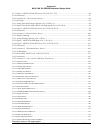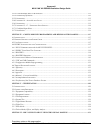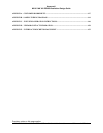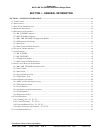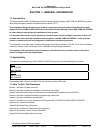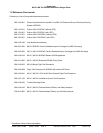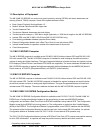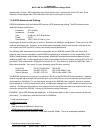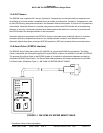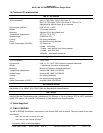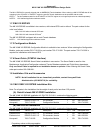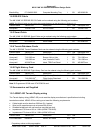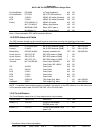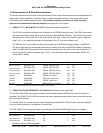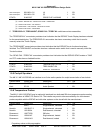
Honeywell
MK VI MK VIII EGPWS Installation Design Guide
Proprietary notice on title page applies
CAGE CODE: 97896 SCALE: NONE SIZE: A DWG NO: 060-4314-150 REV:
SHEET
16
approximately 35 days. GPS initialization time should be less than 3 minutes with active RTC data. If the
capacitor has discharged then GPS initialization time may be as long as 10 minutes.
1.5.4 GPS Anten na and Cabling
EGPWS installations using the internal GPS require a GPS antenna and cabling. The GPS antenna should
meet the following qualifications:
Frequency: 1575.42 MHz
Impedance: 50 ohms
Gain: 33 dB max, 26.5 dB preferred
Power: 5 VDC
Qualification: TSO C129 or C129a or C144
Antenna gain is limited to 33dB gain, maximum. Antennas with 26dB gain are preferred. There are Active GPS
antennas with higher gain. However, as the active antenna amplifiers amplify noise as well as the signal, this
can overdrive the GPS input AGC circuitry and actually reduce performance.
The following GPS antennas are found to be compatible with the EGPWS internal GPS card. Other GPS
antennas may be found compatible, contact EGPWS engineering for assistance. It is the responsibility of the
OEM or owner/operator (and ultimately the regulatory authorities) to assess the antenna acceptance criteria
relative to ARINC, MIL, or other specifications. Boeing has certified the Sensor Systems antenna S67-1575-133
(an ARINC 743A antenna with a 33dB gain) for use on all A/C. This antenna is certified for HIRF/EMI, Class 1
flight critical operation. As a result, it is very expensive (about 3X other versions).
King KA 92 P/N 071-01553-0200 TSO-C129
Sensor Systems P/N S67-1575-52 TSO-C129, ARINC 743A
Sensor Systems P/N S67-1575-133 TSO-C129a, ARINC 743A
The EGPWS requires an input signal of no less than -106 dB (at the EGPWS-GPS coax connector). Installers
need to calculate signal strength, plus antenna gain, minus cable line loss to ensure that the input signal does
not exceed the -106 dB limit. To calculate signal strength at the EGPWS coax connector, assume a received
signal strength of -118 dB at the antenna (this is average signal strength from a GPS satellite at zenith over the
antenna). Add the gain of the antenna, then subtract the line loss of the coax cable, and insertion loss at each
connector, except at the EGPWS. Assume 0.6dB insertion loss per connector.
EXAMPLE: Active GPS Antenna with 26dB gain. A 40 foot coax cable run with 1 coax connector (at the rack
disconnect). The cable has a specified line loss of 0.25dB/foot.
-118dB (received signal)
+ 26dB (antenna gain)
-92dB
-10dB (line loss) (0.25dB/foot x 40 foot run)
- 0.6dB (rack coax connector insertion loss)
= -102.6dB at EGPWS coax connector, better than required -106dB. This is an acceptable installation.



